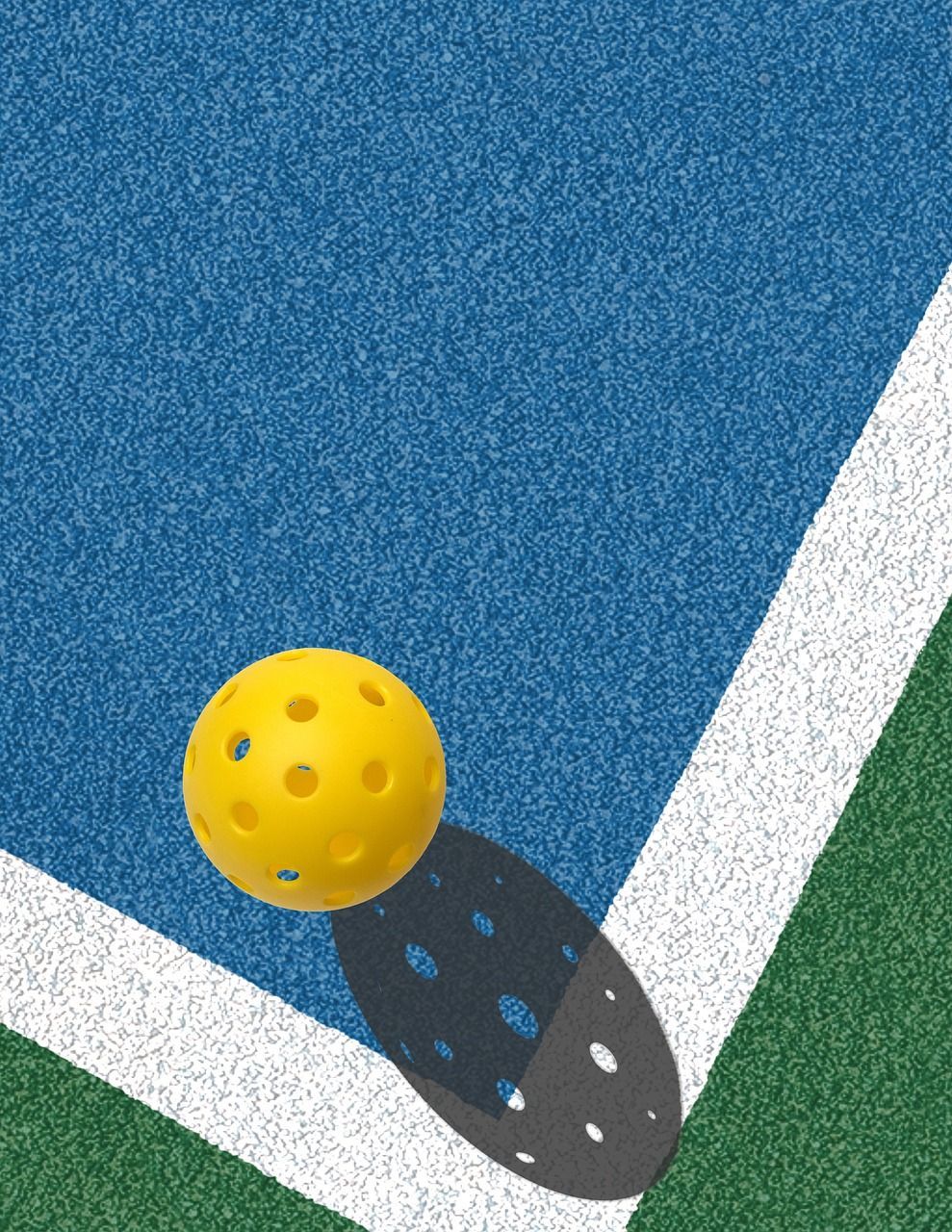Minser Blog

05 Mar, 2024
According to the Association of Pickleball Professionals, almost 1 in 5 American adults have played pickleball in the last year. This is a 35% increase over the year before. With increasing popularity of the sport, let’s address some ways to prevent injuries and play safely. 1. Warm up. While you might be tempted to just step on the court and start playing, not allowing your body to warm up can increase injury risk. Aim for a 5-10 minute warm-up including light cardio movements and shoulder exercises. 2. Don’t overdo it. Gradually increase the amount of time you play with rest days between. 3. Do strength training exercises. Condition your body to tolerate increased load. This is especially important for the rotator cuff, core, and knees. 4. Don’t forget to protect your eyes. The pickleball can travels faster than a tennis ball since it is smaller. When there are quick battles at the kitchen line, there is a chance it could hit your face.

30 Sep, 2023
In honor of Breast Cancer Awareness Month, we want to bring awareness for the examination and detection of lumps in the breast tissue. Below are some tips to follow to start monthly checks at home! If you have any concerns, please mention them to your primary care provider. Monthly breast exams starting in the 20s Regular self-exams may make you more likely to catch any changes Review your self-exam technique with your doctor There are three different types of breast exams: Circular: Start at the outer edge of your breast and move fingers around the entire breast in a circular motion Vertical: Start at your underarm area and move your fingers downwards and back up until you have checked your entire breast Wedge: Start at the outer edge of your breast and move your fingers toward the nipple and back to the edge until you have checked the entire breast in small wedge-shaped sections Use the pads of your three middle fingers when performing exam Always check your underarm and upper chest wall Apply different levels of pressure Look at your breasts in a mirror to check for any changes such as, breast shape and/or swelling

19 Jun, 2023
When you care about your car, you take it to the shop for tune ups it needs—oil changes, tire rotations, new brakes, etc. Your spine is no different. It needs a regular “tune up” as well, complete with chiropractic adjustments. Chiropractic tune ups can serve three purposes: 1. Evaluate the state of your body, even if you have no pain. Even people who feel fine have areas of their spine or extremities that are out of normal alignment. When we adjust those bones back into place, people feel better in some way. If we waited until we felt pain, we would all wait until we needed root canals or crowns before going to the dentist! 2. Address major or minor pains you currently have, but have not been too worried about. Have you had any nagging discomforts or pain coming from your spine or your extremities? Do these discomforts prevent you from doing the activities you enjoy? Instead of wondering if the pain will continue to get worse or stay that way from the rest of your life, give chiropractic a try. You do not have to live with pain. 3. Prevent future problems that can and likely will arise from your joints being out of alignment and not functioning at 100%. Our society is moving toward preventative health care. Chiropractic has been at the forefront of this concept since the chiropractic profession was founded in 1895. Arthritis, overuse injuries (like carpal tunnel and tennis elbow), rotator cuff injuries, and knee problems are just some examples of conditions that may be prevented with chiropractic care. Scheduling chiropractic tune ups allow you take care of your body so that your machine functions as well as it possibly can. Please remember to make time to care for yourself; you are worth every penny.

22 May, 2023
Annual physical exams and wellness check-ups. Take this opportunity to discuss any concerns you may have and realize no question is too small when it comes to your wellbeing. Fuel your body with a well-balanced & colorful diet. Sticking to the outsides of the grocery store when shopping is a great place to start. Remember the longer the shelf life the less nutrients it has. Get active! It is recommended to get a minimum of 30 minutes of physical activity a day. Take breaks during your day to breathe and refocus. Stress is a major health concern when left unmanaged. Restful sleep. Women should be getting between 7-9 hours of sleep every night for optimal hormone function. Be mindful of how we are caring for ourselves, and May this month nudge you in the right direction.

17 Apr, 2023
1. Practice what you preach. It’s considerably easier to convince your children to adopt healthy habits if you’re doing the same. 2. Involve the whole family. Establishing a regular pattern of exercising as a family accomplishes two important things: It keeps everyone in shape and serves as important bonding time. 3. Limit screen time. Too much time watching television or playing video/computer games can lead to excessive snacking and a sedentary lifestyle. 4. Make it fun. Let your children discover which specific healthy activities they truly enjoy. If they don’t like it, they won’t stick with it. 5. Focus on the positives. Celebrate your children’s successes and help them develop a healthy self-image. Low self-esteem can lead to poor eating, exercise, and lifestyle habits. 6. Set goals and limits. If goals are excessively restrictive or vague, children are less likely to rise to the challenge. Establish clear nutrition and exercise goals (dessert two times a week; a half-hour walk five times a week, etc.). 7. Reward wisely . Rather than rewarding children with desserts or sugary snacks (a common tactic), find healthy ways to show a job well done. 8. Turn them into chefs. Get your children involved in planning and preparing meals; then sit down at the dinner table together and enjoy the healthy meal you’ve created together. 9. Knowledge is power. Teach children the value of reading food labels and being aware of the healthy (and not so healthy) ingredients in the foods they eat. 10. Don’t pass the buck. You’re the parent—that means it’s up to you to teach your children about good health. School and health care providers can only do so much.

17 Feb, 2023
“It’s too cold. I’ll get sick. I might slip and fall.” All common excuses for avoiding exercise when the seasons change. With four to six months of winter in many parts of the country, you can’t afford to skip winter exercise altogether. For both physical and mental well-being, the human body needs activity all year round. Whether you find creative ways to exercise indoors or dive into the great outdoors, maintaining an exercise regimen through the holidays and beyond not only keep you fit, but also give you a head start come spring. TAKE IT OUTSIDE If you don’t want to stay cooped up inside for months, exercising outdoors can be a great way to stay in shape while appreciating the sights and sounds of winter. From snowball fights and sledding to snowshoeing and cross-country skiing, a host of outdoor activities awaits you. Of course, if you have any medical conditions or concerns about outdoor exercise, check with your doctor first. Here are a few tips to help make the most of your time outdoors: • Dress for the cold • Protect your skin • Drink fluids • Beware of wind chill • Don’t push your luck in dangerous conditions STAY INDOORS Despite all the excuses for not wanting to face the elements, there are times when it is wise to avoid outdoor activities. If you find yourself in the mist of a polar vortex, try one of these indoor workout options: • Walk the mall • Hit the gym • Take a dip in an indoor pool • Create a home gym Winter can be one of the most exhilarating times of the year. With the sun and snow and a variety of winter sports to choose from, there’s no reason to hibernate indoors. It may be chilly and downright freezing at times, but your body still craves at least 30 minutes of exercise each day. Stay indoors if you have to, but if the conditions are decent and you dress appropriately, you can walk, run, hike, and play sports outside. Once you get going, you won’t even notice the cold.

By Katherine Leither
•
16 Nov, 2022
Here are some tips to help minimize the chance that your back does not get injured while clearing the snow. 1. Stretch both before and after shoveling! You want to make sure your muscles are warmed up prior to shoveling as shoveling is both a cardio and weight training activity. This is especially true first thing in the morning when shoveling before work or getting the kids off to school. 2. Do not lift the snow. Lifting snow in the shovel can be a very heavy weight that you may not normally try to lift. Instead, push the snow forward and to the sides. In my house, we have a shovel that has a 48” blade that works great for pushing lighter, fluffy snow, but I would never use for the wet, heavy snow. 3. Do NOT twist and lift! Twisting or rotation puts extra stress on your discs and can lead to an even worse injury to your back than a simple low back strain. 4. Lift with your legs and not your back if you have to lift. Think of doing this similar to doing squats in the gym where you engage and support your low back and use the strength of your legs to lift. 5. Take lots of breaks. Shovel an area and then take a quick break to stretch before continuing to shovel. The likelihood of an injury happening is a lot lower and you likely won’t be sore later.

17 Oct, 2022
Children bump and jar their spines constantly in the first five years of life. As they develop from helpless infants into fearless adventurers, bumps and falls naturally come with your child’s desire to learn everything about the world around them in the quickest amount of time possible. But even normal, everyday activities can cause spinal trauma with least effects: • Delicate nerve tissue can be damaged, resulting in interference with the brain’s ability to send nerve impulses to organs, tissues, and muscles. • Discs, blood vessels, and other soft tissues can swell and become inflamed. • The body may respond with bone spurs and other abnormal bone growth. • Various systems (immune, digestive, respiratory, etc.) through the body may malfunction. In each of these examples, pain or other obvious symptoms may not be present at the time, yet optimum health and well-being have been compromised. When your child is seen by your family wellness chiropractor, your child’s spine and nervous system will be analyzed to determine if a vertebral subluxation is present. Often, the doctor will touch the spine and motion and examine your child’s posture. You may already be aware of the benefits of chiropractic care. You may have experience for yourself the relief that comes from having a properly aligned spine. If you have not had your child’s spine evaluated, it’s time to schedule an appointment to determine if there is a vertebral subluxation. Like dentistry, chiropractic, when started young, provides your child with a way to attain full-body health that lasts a lifetime. Call the office to schedule your child’s appointment today.

23 May, 2022
You may have heard your doctor tell you that sleep is important for rest and recovery. Our bodies rejuvenate itself during our deep-sleep cycles. Growth hormone helps fuel growth in children and helps build muscle mass and repair cells and tissues in children and adults. We can also fight off various infections when we have a good night’s sleep, which helps protect us from getting sick and speeds recovery when we are sick. According to the Mayo Clinic and the National Institutes of Health, adopting the following practices can restore your quantity and quality of sleep. 1. Go to bed and wake up at about the same time every day. This reinforces a sleep/wake cycle to help you fall asleep faster. 2. Don’t eat large amounts of food or drink large quantities of liquid before bedtime. 3. Avoid nicotine, caffeine, and alcohol in the evening. 4. Exercise regularly. 5. Make your bedroom a dark, quiet, and comfortable place. 6. Sleep primarily at night. Avoid napping. 7. Choose a comfortable mattress and pillow. 8. Start a relaxing bedtime routine. Start a habit of doing the same thing at the same time each night to tell your body it’s time to wind down. 9. Go to bed when you’re tired and turn out the lights. 10. Use sleeping pills only as a last resort. You should check with your doctor before taking any sleep medications as they might interfere with other medications you already take. Did you know chiropractic care can also help with better sleep? Resetting the nervous system to its proper function can help with more restful and restorative sleep. We also offer acupuncture at the clinic which is helpful for those who suffer from insomnia and other sleep issues. Talk to your doctor at your next appointment if you struggle with sleep issues!

26 Apr, 2022
It’s that time of year again when seasonal allergies start affecting us. The most common allergens include dust, pollen, mold, and animal fur. This can cause a runny/stuffy/itchy nose, headaches, itchy/watery eyes, nasal congestion, fatigue, etc. Did you know if you suffer from allergies, we can help manage and relieve your symptoms? At the clinic, we utilize chiropractic care, acupuncture, and supplementation for relief of allergies. Chiropractic care can help alleviate symptoms of allergies. Adjustments to the cervical spine in particular can help relieve the symptoms of allergies due to nerves in that area innervating the eyes, nose, and throat. Acupuncture is utilized by applying needles to the acupuncture points along meridians that correspond to energy flow or Qi throughout the body. There are specific points along these meridians help alleviate the symptoms of allergies. We can also recommend different immune supporting and anti-histamines supplements. Quercetin, stinging nettle, and bromelain are just a few examples of supplements that help support sinus and respiratory health. Speak with your doctor about which treatments and supplements are best for your allergies at your next appointment!
PHONE: 320-253-5650
ADDRESS: 203 Park Avenue South, St. Cloud, MN 56301, USA
Content, including images, displayed on this website is protected by copyright laws. Downloading, republication, retransmission or reproduction of content on this website is strictly prohibited. Terms of Use
| Privacy Policy
